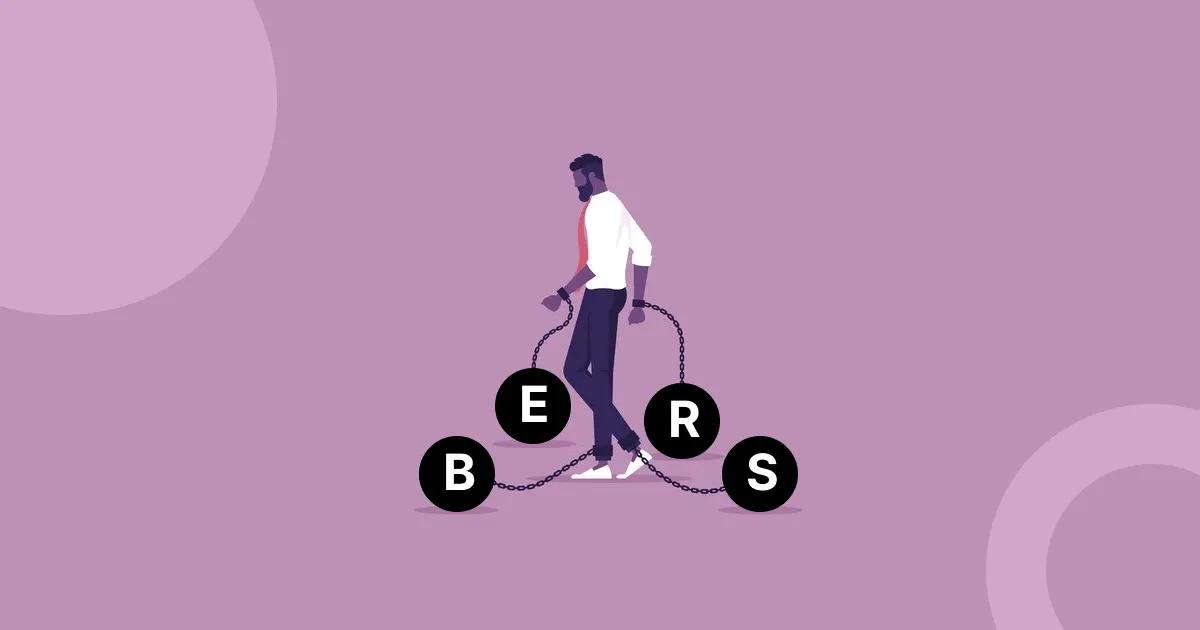Carefully and musicians select their notes with precision, writers use words to paint vivid pictures and create harmonious compositions. The choice of writing style plays a pivotal role in achieving this artistic finesse.
Imagine reading a heartwarming story narrated in a dry, technical tone, or trying to grasp a complex scientific concept explained in poetic metaphors. It would be like using a hammer to thread a needle - ineffective and jarring.

Therefore, understanding and employing the right writing style is crucial to effectively communicate ideas, evoke emotions, and engage readers.
The Role of Grammar and Proofreading Tools
While writing style adds flair to your content, impeccable grammar and polished language are the pillars upon which it stands. Even the most compelling ideas can be overshadowed by grammatical errors and sloppy writing.
This is where grammar and proofreading tools like Copychecker come into play. They act as vigilant guardians of your writing, ensuring it remains error-free and maintains the desired style.
Exploring Different Writing Styles
What is Writing Style?
Writing style is your unique fingerprint on a piece of text. It's the way you string words together, the tone you adopt, and the overall impression your writing leaves on the reader. Just as individuals have distinct personalities, writers have distinct styles.
The Influence of Audience and Purpose
Your choice of writing style is heavily influenced by your target audience and the purpose of your writing. Are you addressing academics, casual readers, or professionals? Is your goal to inform, entertain, persuade, or provoke thought? Understanding your audience and purpose is the compass that guides you to the right style.
Common Writing Styles
Now, let's delve into some common writing styles:
Descriptive
Descriptive writing aims to paint a vivid picture with words. It appeals to the reader's senses, making them feel like they're experiencing the subject firsthand. This style is often used in creative writing, travelogs, and literature.
Narrative
Narrative writing tells a story, taking readers on a journey through a sequence of events. It's characterized by characters, a plot, and a clear timeline. Novels, memoirs, and some forms of journalism often adopt this style.
Expository
Expository writing is all about providing information in a clear and concise manner. It's commonly used in textbooks, reports, and academic papers, where the primary goal is to educate and inform.
Persuasive
Persuasive writing aims to convince readers to adopt a particular point of view or take a specific action. It relies on well-structured arguments, emotional appeals, and persuasive techniques. Think of persuasive essays, advertisements, and political speeches.
Argumentative
Similar to persuasive writing, argumentative writing presents a clear argument but focuses more on logical reasoning and evidence. It often involves a debate-like structure with counterarguments and refutations.
Creative
Creative writing is the realm of artistic expression. It encourages wrlanguage andk the rules, experiment with language, and create new worlds. Poetry, fiction, and screenplays are some examples of creative writing.
Choosing the Right Writing Style

Matching Style to Purpose
Selecting the right writing style is like choosing the perfect outfit for an occasion. You wouldn't wear a tuxedo to a beach party, nor would you wear a swimsuit to a formal dinner. Similarly, your writing style should align with your purpose.
Considerations for Academic Papers
In academic writing, clarity, objectivity, and adherence to established conventions are paramount. Depending on your discipline, you might need to follow specific style guides like APA, MLA, or Chicago. These guides provide the rules and conventions that define the writing style for academic papers.
Adapting to Different Genres
Writers are often called upon to adapt their style to various genres. For instance, a journalist might need to switch from a narrative style for a feature article to an expository style for a news report. Adapting to different genres showcases versatility and enhances your writing skills.
The Grammar Checker Tool Advantage
Benefits of Grammar Checkers
Grammar checkers, like Copychecker, offer writers numerous advantages. They act as a safety net, catching errors that might otherwise go unnoticed. They save time and effort, allowing writers to focus on crafting their content rather than nitpicking grammar.
Copychecker: An Introduction
Copychecker is a leading grammar and style checker tool that empowers writers to polish their work. Its user-friendly interface and powerful algorithms make it a valuable companion for writers of all levels.
How Copychecker Works
Copychecker uses advanced algorithms to analyze your text for grammar, punctuation, and style issues. It provides real-time suggestions and explanations, helping you understand and learn from your mistakes. Now, let's see how you can utilize Copychecker to enhance your writing.
Using Copychecker for Grammar and Style

Proofreading for Grammar and Punctuation
Copychecker's primary function is to ensure your writing is grammatically sound. It detects and highlights errors such as subject-verb agreement, verb tense inconsistency, and punctuation mistakes.
Evaluating Writing Style
Beyond grammar, Copychecker evaluates your writing style. It examines sentence structure, word choice, and readability. It provides insights into the tone of your writing, helping you maintain consistency.
Checking for Clarity and Consistency
Clarity is essential in any form of writing. Copychecker identifies confusing or convoluted sentences and suggests improvements. It also checks for consistency in terminology and formatting, ensuring a polished final product.
Customizing Your Writing Style with Copychecker
Adjusting Style Preferences
Copychecker allows you to customize its suggestions based on your preferred writing style. Whether you want a formal tone for a research paper or a more casual style for a blog post, you can tailor Copychecker's recommendations to match your needs.
Setting Tone and Formality
The tone of your writing can vary from formal and academic to informal and conversational. Copychecker helps you strike the right balance by offering suggestions that align with your desired tone and formality level.
Ensuring Consistent Style Throughout Your Paper
Maintaining consistency is crucial in longer documents like research papers or theses. Copychecker helps you ensure that your writing style remains consistent from start to finish, making your paper more cohesive and professional.
Integrating Copychecker into Your Writing Process

Incorporating Copychecker as a Writing Assistant
To get the most out of Copychecker, it's essential to integrate it into your writing process. Use it as a companion to guide you through the editing and proofreading stages.
Real-time Editing with Copychecker
Copychecker offers real-time suggestions as you write. This feature is invaluable for catching errors on the spot and improving your writing as you go along.
Post-Writing Review and Revision
After completing your draft, run a final check using Copychecker to ensure your document is polished and ready for submission or publication. This step is vital for producing high-quality work.
Other Tools and Considerations
Alternative Grammar Checkers
While Copychecker is a powerful tool, there are other grammar checkers available. We'll briefly explore some alternatives and discuss their unique features.
Combining Grammar and Style Checkers
For comprehensive writing improvement, some writers choose to use multiple grammar and style checkers in tandem. We'll discuss the benefits and considerations of this approach.
The Human Touch: When to Seek Proofreading Help
While grammar checkers are invaluable, there are times when the human touch is irreplaceable. We'll explore scenarios where professional proofreading or editing services may be necessary.
Mastering the Art of Transitioning Between Styles
Transitioning between writing styles can be a challenging but essential skill for versatile writers. Whether you're working on a research paper that requires a formal tone or a blog post that demands a casual and conversational approach, knowing how to switch seamlessly between styles can enhance the impact of your writing.
Why Transitioning Between Styles Matters
Imagine you're writing an academic paper that involves presenting statistical data. Here, a formal and objective style is suitable.
However, if you need to interpret the significance of those statistics for a blog post aimed at a general audience, you'd want to switch to a more accessible and engaging style.
Tips for Successful Style Transitions
Identify the Purpose: First, understand why you need to switch styles. Is it to clarify complex information, make your content more relatable, or engage a specific audience? Knowing the purpose will guide your transition.
Maintain Consistency Within Sections: If your paper has multiple sections with different writing styles, ensure consistency within each section. This prevents confusion and maintains the flow of your writing.
Use Transitions Phrases: Employ transitional phrases and sentences to signal a shift in style. For example, you can start a new section with phrases like "Now, let's take a closer look at..." or "In a more informal context..."
Adapt Your Vocabulary: Adjust your vocabulary and word choices to match the desired style. In formal writing, opt for precise and technical terms, while in informal writing, use simpler and more everyday language.
Consider Your Audience: Always keep your audience in mind. What style will resonate best with them? Understanding your readers' expectations is key to effective style transitions.
The Ongoing Evolution of Writing Styles
Writing styles are not static; they evolve with time and societal changes. What was considered appropriate or effective in writing a few decades ago may not hold true today. Therefore, it's essential for writers to stay current with evolving writing trends and adapt accordingly.
Factors Influencing Style Evolution
Cultural Shifts: Changes in culture, values, and societal norms can significantly impact writing styles. For example, contemporary writing may focus more on inclusivity and diversity, leading to shifts in language usage and tone.
Globalization: In an increasingly interconnected world, writing styles often need to accommodate diverse global audiences. This can influence choices related to language, tone, and cultural sensitivity.
Accessibility and Inclusivity: There is a growing emphasis on creating content that is accessible to individuals with disabilities. This has led to changes in writing practices, including the use of plain language and alternative text descriptions for visuals.
FAQs
What type of writing style did Robert Frost use?
Robert Frost was known for his use of the "Descriptive" and "Narrative" writing styles in his poetry. His works often painted vivid scenes and told stories, making them accessible and engaging to readers.
What type of learning style is writing down?
Writing down information is associated with the "Visual" learning style. People who learn through writing benefit from seeing information in written form, which aids comprehension and retention.
What type of writing style would I use in the medical field?
In the medical field, a "Formal" and "Expository" writing style is typically used. Clarity, precision, and adherence to scientific conventions are essential in medical writing to ensure accurate communication of complex information.
Which type of writing requires a formal style?
Formal writing styles are commonly required in academic and professional contexts. This includes research papers, legal documents, business reports, and any situation where professionalism and clarity are paramount.
Conclusion
In conclusion, your choice of writing style has the power to engage, educate, entertain, or persuade your readers. It's a tool that can elevate your writing from ordinary to extraordinary, leaving a lasting impact.
Copychecker, with its grammar and style checking capabilities, is your trusty companion on the journey to becoming a better writer.
In the end, writing style is not a rigid framework but a versatile palette from which you can draw to convey your message effectively. Choose wisely, adapt as needed, and always strive for clarity, coherence, and creativity in your writing.




